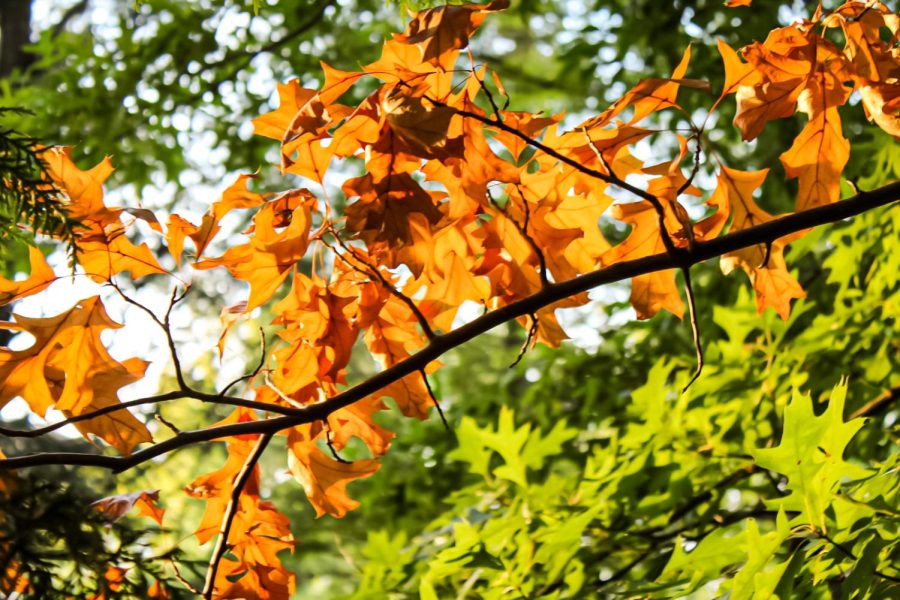GV professor: Climate change a factor in later shift of GV area foliage colors
Oct 3, 2022
In the areas surrounding Grand Valley State University, local experts have been predicting a mid- to late-October peak for this year’s leaf colors that represent a slightly delayed timeline than in recent cycles.
For those wondering why the change seems to be taking longer this year, the answer may be related to climate change.
In West Michigan specifically, weather is often unpredictable. However, the Grand Valley State University area may be impacted by climate change in many ways. The colorful autumn leaves are one indication.
Experts are acknowledging that, although the transition from summer to autumn leaf colors often varies, this year there are some key factors at play.
GVSU Professor Elena Lioubimsteva, an expert on climate change and weather patterns in GVSU’s Environmental and Sustainability Studies program, offered insight into how exactly the two are correlated.
“Our summers are getting longer,” Lioubimsteva said. “Trees are changing colors of their leaves because the amount of chlorophyll is dropping due to lower temperature and sunlight.”
Sunlight, she said, remains about the same as before, but temperature is remaining higher for longer and there is much warmer weather in September.
Carbon dioxide (CO2) in the atmosphere is another factor at play. Lioubimsteva said CO2 not only factors into commonly discussed areas of environmental studies and climate change but into later peak color times as well.
“Trees are turning yellow later,” Lioubimsteva said. “For some species, but not all, a higher amount of CO2 in the atmosphere also helps to build more chlorophyll and keep it longer.”
Shorter days, along with limited sunlight, or at least less sunlight than the summer months, are what trigger trees to produce less chlorophyll. Chlorophyll is the pigment present in plants that is responsible for the green color leaves give off in the warm season. When the temperature drops, trees start producing less.
Lioubimsteva also made mentioned additional factors affecting the leaf patterns in the area surrounding GVSU, specifically weather patterns. Weather patterns in West Michigan play a sizable role in the leaves and when their green shade fades.
The trees’ reduced amount of chlorophyll gets broken down and absorbed back into the tree, which is the reason one can see all the browns, oranges and yellows in the fall.
“Other factors contributing to the timing of color peak include precipitation and cloud cover, but their patterns are more variable compared to the relatively steady warming trend,” Lioubimsteva said. “This summer was particularly unseasonably warm.”
With some exceptions and outlier seasons, temperature patterns have steadily increased over the years.
According to Michigan.gov, Earth’s average temperature has risen 1.8 degrees Fahrenheit from 1901 to 2016. This has an impact on climate change patterns day to day and across the globe.
As the local foliage begins to make a later-than-usual transition, GVSU community members can expect to see this shift as a minuscule indicator of the much larger dangers presented by the changing climate.






















